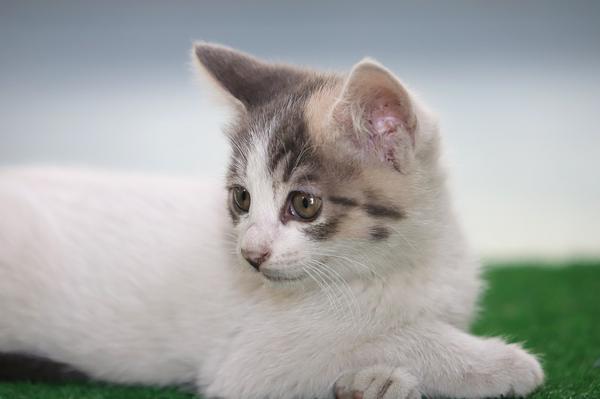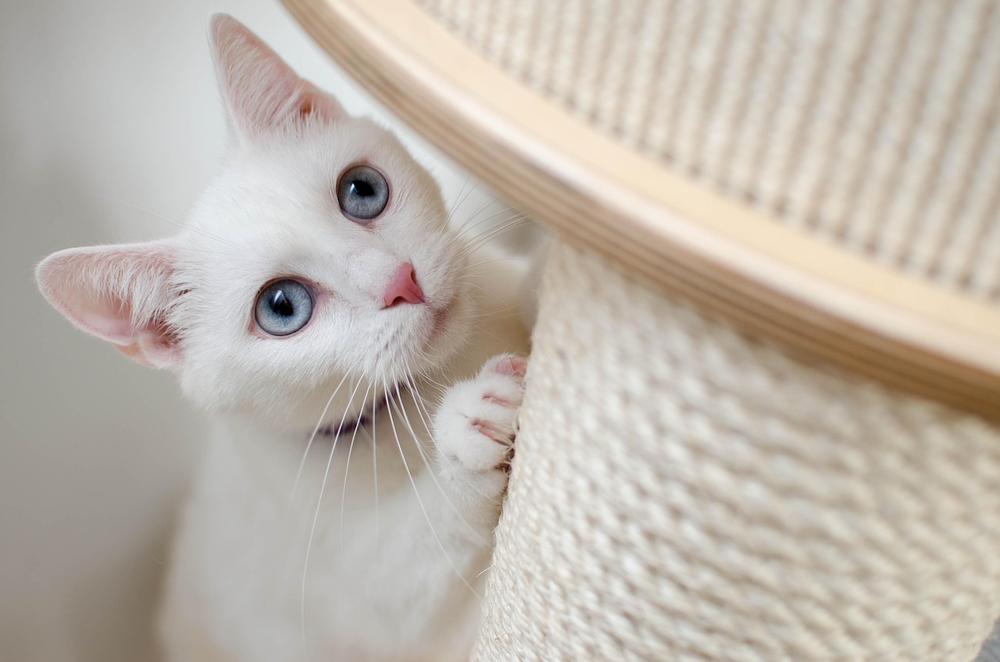How Long Does It Take to Litter Train a Kitten? (Let's Be Honest)

Just imagine:
You've got your home just the way you like it - clean, cozy, and clutter-free. 😺
But...what if a cute little bundle of fur could potentially ruin it all?
Don't worry, I've got the answers you need.
Keep reading.
Litter Training a Kitten: Quick Steps for Box Training
Litter training can start early
You know what they say, it's never too early to start litter training your kitten!
In fact, training can begin as soon as three to four weeks old, right when they are starting to wean off their mother's milk. So, even if you missed that window, don't worry!
Whether you have an older kitten or an adult cat, you can start the training process as soon as you bring them home.
Techniques for litter training success
Now, let me share a couple of tips on how to approach litter training your furry friend.
First things first, confinement is key.
To begin, keep your kitten in a small space with some dirt or litter already placed in a low box.
They catch on pretty quickly!
Furthermore, you have to closely monitor their schedule.
After meals and naps, gently guide them to the litter box.

Accidents may happen, but don't fret.
If needed, use an enzyme-based cleaner to remove any smells. Kittens have sensitive noses, so eliminating odors is crucial for future success with the litter box.
Positive reinforcement is key
When it comes to litter training, positive reinforcement is essential.
Show your kitten where each litter box is located, place them inside when necessary, and offer treats as rewards for using the litter box correctly.
Trust me, they'll get the hang of it in no time at all!
But remember, punishing your kitten harshly for mistakes won't do any good.
The key is to stay patient and positive throughout the training process.
Consistency is fundamental.
Another important factor is providing a quiet and easily accessible location for the litter box. Cats value privacy too, so make sure to consider their needs.
Lastly, make sure that you scoop the litter box daily and change the litter weekly.
Maintaining cleanliness is vital for your kitten's comfort and success in using their litter box.
Main points I'll expand upon further down this article:
- Choose a litter box appropriate for your kitten's size and gradually increase its size as they grow.
- Consider using litter box accessories like liners and FELIWAY Classic to help with cleaning and reduce stress.
- Provide a choice between uncovered or covered litter boxes based on your kitten's preferences.
- Regularly clean and maintain the litter box to ensure your kitten's safety and privacy.
- Experiment with different types of litter to find what your kitten prefers.
- Transition to a new litter type gradually by mixing it with the original litter.
- Place the litter box in a quiet area that provides privacy for your kitten.
- Consider multiple litter boxes if you have a multilevel home or multiple cats.
- Use positive reinforcement, such as treats and attention, when your kitten uses the litter box.
- Avoid punishment or negative reinforcement when training your kitten and maintain a peaceful environment.
And now, let's delve into all the details you need to know when choosing the perfect litter box for your small kitten... I'll share some helpful tips and recommendations based on my own experience with litter training...
Choosing a Kitten Litter Box
When choosing a litter box for your kitten, consider the following suggestions:
- Start with a litter box that has lower sides to allow for easy entry and exit. This is important for kittens who may still be developing their coordination.
- Make sure the size of the litter box is appropriate. Kittens may refuse to use it if it's too small, so choose one that gives them enough space.
- Opt for litter boxes with contained walls and shallow depths, as these are easier for kittens to navigate.
- Consider having multiple small litter trays throughout your home. This can be convenient, especially if you have a larger living area or multiple levels in your house.
- As your kitten grows, gradually introduce a larger litter box with a lower lip for easy accessibility.
- Offer a choice between uncovered or covered litter boxes. Cats have individual preferences, so let your kitten decide what they prefer.
- Maintain cleanliness regularly by emptying, cleaning, and refilling the litter box. This ensures the safety, privacy, and prevents any territorial marking behaviors.
- Consider using litter box accessories such as liners and FELIWAY Classic to aid in cleaning and reduce training-related stress.
Your kitten's litter box experience will be comfortable, secure, and hygienic if you adhere to these suggestions.
And if you're wondering when the right time is to start litter box training kittens, I've got you covered.
In my guide on litter box training, I delve into this topic and provide valuable insight on when to begin this important aspect of cat care.
Discover all the tips and advice in my article
When to Start Litter Box Training Kittens+.
So, don't hesitate to check it out and find the answers you're looking for.
Selecting the Best Kitten Litter
Try different litter textures and types to figure out what your kitten likes.
Play around with fine-grain or pellet-based options, as well as basic gravel or clumping varieties.
But be careful when it comes to young kittens and clumping clay litter. To switch to a new type of litter, take it slow and mix it in with the old one. Or try using outdoor substances or special products to encourage proper litter box usage.
Where to Put Your Cat's Litter Box

When it comes to where you should put your cat's litter box, here are some things you should please bear in mind:
- You want the litter box to be in a quiet area, away from all the hustle and bustle of your home. This way, your kitten will feel at ease when they need to do their business.
- Cats like privacy, just like us humans. So, choose a clean and clutter-free corner in a room that is safe for your kitten, or you can even have multiple litter boxes spread throughout your house.
- Avoid placing the litter box in noisy areas with lots of people coming and going. Also, don't put it near your cat's food or water bowls. Nobody likes doing their business right next to their dinner! 🙅
- If you have a house with multiple levels, it's a good idea to have litter boxes on each level. This makes it easier for your cat to access them whenever they need to go.
- When you have more than one cat, it's super important to provide safe and quiet locations for each litter box. This helps prevent any territorial issues between your furry friends.
- In bigger homes or if you have multiple cats, having more than one litter box can be really helpful. It prevents overcrowding and reduces the chances of any kitty conflicts.
- Don't forget to clean the litter box every day! Trust me, neither you nor your cat want to deal with a dirty litter box. And every 7 to 10 days, it's a good idea to fully empty and wash it to make sure there's no buildup of yucky odors.
- Placing the litter box in a corner can be a good idea, especially when you're training a shy or scared kitten. It provides them with a sense of security during the learning process.
- Make sure that the area where you put the litter box is well-lit but with few distractions. This creates a calm and soothing environment for your cat. No one wants to do their business in the dark!
- Lastly, it's a good idea to have litter boxes spread out throughout your home. This way, your kitten can easily find one whenever nature calls.
By using these suggestions, you can provide a comfortable and appropriate place for your furry companion to attend to their toileting requirements.
Is It Hard to Litter Train a Kitten?
Litter training a kitten can be overwhelming, but don't worry, you got this:
- Start early: Begin litter training right when you bring your furry friend home.
- Choose the right litter: Get a safe and easy-to-dig litter specifically made for kittens.
- Provide multiple litter boxes: Put litter boxes in different spots around your place so that finding one is a breeze for your little buddy.
- Keep the litter box clean: Scoop that box every day and change the litter regularly to keep it smelling fresh.
- Use positive reinforcement: Give treats or praise when your kitten does their business in the litter box like a champ.
- Prevent accidents: Keep an eye on your kitten and gently guide them to the litter box if they show signs of needing to go elsewhere.
- Address issues promptly: If your kitten keeps avoiding the litter box or has accidents outside of it, reach out to a vet for guidance.
- Create a calm environment: Set up a cozy and quiet spot for the litter box to reduce distractions for your little one.
- Avoid punishment: Don't scold or punish your kitten for accidents because it will only scare them and slow down progress.
- Be patient and consistent: Remember, each kitten is different, so stay patient and keep providing the support they need.
With time and effort, your kitten will soon become a litter box pro. 😺
And that wraps up today's article.
If you wish to read more of my useful articles, I recommend you check out some of these: How to Potty Train a Cat Without a Litter Box, Cat Lying With Chin on Floor, Do Cats Have Nightmares, How Long Does It Take for Cat Mother to Forget Her Kittens, and Newborn Kitten Wont Stop Crying
Talk soon,
-Sarah Davis